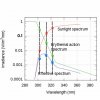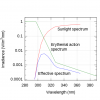oldbeancounter
Well-Known Member
thanksA few of the members over at my place found em cheaper on alibaba, I'll see if I can get a link
thanksA few of the members over at my place found em cheaper on alibaba, I'll see if I can get a link
Thanks, a guy just can’t put down some plastic somewhere, now? Prob won’t happen anyway else...Neverland
and she finishes in 7 weeks
I'll be sharing beans at Ridfest in Aug, once that happens I'm sure they'll get around
Got something against a vacation in CO?Thanks, a guy just can’t put down some plastic somewhere, now? Prob won’t happen anyway else...
Lol, I don’t need to go on vacation for seeds....they’re expensive enuff over the internet..,,Got something against a vacation in CO?
thanksA few of the members over at my place found em cheaper on alibaba, I'll see if I can get a link

I didn’t check your nums...i ran mine for 6 hrs/day for the 13.4 num highlighted in blue...@80uW/cm sq, 22” above tops w 2x54w 4’ t-5 arcadia 14%uvbI wish I knew the actual WV range. This excerpt is from the .pdf @Randomblame posted.
View attachment 4344052
12hrs = 43,200 seconds
1kJ = 1000J
Watts = J/s
Total daily dose of 13.4kJ/m2
13,400J ÷ 43,200s
=
0.31J/s per m2;
Or...
0.31W/m2
310mW/m2
31μW/cm2
28.8mW/ft2
Total daily dose of 6.7kJ/m2
6,700J ÷ 43,200s
=
0.155J/s per m2;
Or...
0.155W/m2
155mW/m2
15.5μW/cm2
14.4mW/ft2
If you plan on running UVB for less than 12hrs per day, then your intensity or wattage will increase else the total daily dosage won't be satisfied.
Haha well we can check numbers a quick way.I didn’t check your nums...i ran mine for 6 hrs/day for the 13.4 num highlighted in blue...@80uW/cm sq
I was measuring closer to 80, but reasonably close @22”Haha well we can check numbers a quick way.
According to the math, taking 6hrs to dose 13.4kJ/m2 should be 2× the intensity of emitting 13.4kJ/m2 over a 12hr duration.
12hrs = 31μW/cm2
6hrs = 62μW/cm2
Was 62μW/cm2 close to what you were measuring?

Ok dude, i’ll try it...it’s coming by rowboat from China, so don’t hold your breath...start prayin that it at least gives consistent readings, so it can be calibrated to my uvb meter... the lux/ppfd uv analog.UV index takes the 'SPD curve' (Sunlight spectrum) and multiplies each nm's intensity (*) by the weighted % (*) at each nm of the 'weighted curve' (erythemal curve). The resulting products (*) of the 2 curves y-axis variables creates a new curve (Effective spectrum).
Once the effective spectrum curve has been calculated/created you find the total area under the effective spectrum curve and divide by 25mW/m2 for a final UV index calculation.
View attachment 4344130
In the UV index figure, total UVA radiation is weighted <1% of its true value, UVB is weighted >99% of its true value.
UVA will still effect the UV index value due to solar UVA being 500× more prevalent than UVB, but much less so at <1% weight. I think UV index might give you a good idea in terms of UVB intensity for your plants(?).
These are interesting, I might try one...
https://www.ebay.com/p/Smart-UV-Light-Index-Detector-Ultra-Violet-Meter-Tester-for-iPhone-Android-Phone/1851573534?
^^Curious what it'd read at when your other meter was at 80μW/cm2 @Or_Gro
Bwahaha! That's awesome, thoughts and prayersOk dude, i’ll try it...it’s coming by rowboat from China, so don’t hold your breath...start prayin that it at least gives consistent readings, so it can be calibrated to my uvb meter... the lux/ppfd uv analog.
@Randomblame , whaddaya think?


a 500w that draws 324w is called a 324wThey are cheap chinese led's 2700K & 6500K each is a 500 watt that actually draw 324 watts so a total of 2000 watts in a 5 x 5 garden
https://www.amazon.com/gp/product/B078813LN9/ref=ppx_yo_dt_b_asin_title_o07_s00?ie=UTF8&psc=1
ya that is sign for me not to buy when it starts out misleading like that.a 500w that draws 324w is called a 324w
good findUV index takes the 'SPD curve' (Sunlight spectrum) and multiplies each nm's intensity (*) by the weighted % (*) at each nm of the 'weighted curve' (erythemal curve). The resulting products (*) of the 2 curves' y-axis values (per nm) creates a new curve (Effective spectrum).
Once the effective spectrum curve has been calculated/created you find the total area under the effective spectrum curve and divide by 25mW/m2 for a final UV index calculation.
View attachment 4344130
In the UV index figure, total UVA radiation is weighted <1% of its true value, UVB is weighted >99% of its true value.
UVA will still effect the UV index value due to solar UVA being 500× more prevalent than UVB, but much less so at <1% weight. I think UV index might give us a good idea in terms of UVB intensity for our plants(?).
These are interesting, I might try one...
https://www.ebay.com/p/Smart-UV-Light-Index-Detector-Ultra-Violet-Meter-Tester-for-iPhone-Android-Phone/1851573534?
^^Curious what it'd read at when your other meter was at 80μW/cm2 @Or_Gro
Ok dude, i’ll try it...it’s coming by rowboat from China, so don’t hold your breath...start prayin that it at least gives consistent readings, so it can be calibrated to my uvb meter... the lux/ppfd uv analog.
@Randomblame , whaddaya think?
Like every other led made it is equivalenta 500w that draws 324w is called a 324w
last time i checked we rate lamps with PPF/J, not PPF/"J-equivalent"Like every other led made it is equivalent
the 9 watt led in my bathroom is equivalent to 60 watts
